Article by: SPfreaks
Article written by Arthur van Pelt
Smashing Pumpkins @ Melkweg, Amsterdam (NL) – Part I
This is Part I of a series of 2, about the Smashing Pumpkins playing in the Melkweg venue in Amsterdam, the so-called “Capitol City of Sin of The Netherlands”. Part I is about the history of this special building, Part II will contain an interview with John van Luyn, the music programmer of Melkweg that hired the Smashing Pumpkins in 1991, but also in 1995, for their famous secret gig that turned out to be the start of the Mellon Collie world tour that lasted over a year.
OK, so here we go! The history of the Melkweg venue, taken from “Sugar, milk and pop-music”, written by C. Th. Bakker (2005), can be read below. Translated from Dutch to English for the history die-hards. But it is very worthwhile adding this part to the Melkweg theme, as even the Smashing Pumpkins are mentioned in this article!
A Summer Project In An Old Dairy Factory
In the year 1970 a Dutch theatre group was looking for a location to do a play, and they finally found an empty dairy factory in the exact centre of Amsterdam. The members of the theatre group, being very enthusiastic, but also very poor, wanted to use the building. With a lot of hard work, lots of ideals and 25,000 Dutch guilders only, they remade the factory into a meeting place, only for the summer period. Like this they could do their play in Autumn of 1970. The project was called “Melkweg” (Milky Way, or Milk Gone), with a wink to the “cosmic” era in the 1960’s and 1970’s, and also, the milk that was gone…
In that timeframe, Amsterdam had become the San Francisco of Europe. The Melkweg quickly became a place for young travelers from all over the globe, looking for rock music, light shows, hash, love and peace. Within a few weeks only, the old dairy factory became their favorite hang-out. The atmosphere of the inspiring 1960’s now really made a move forward and it attracted numerous tourists, locals and artists alike. Visitors of Melkweg were also able to enjoy cinema, books from the bookstore, and there were even a restaurant, a bar, a tearoom and a Dutch pancakes bakery. One of the arty projects of that time was an immense paper roll, that was used to make newspapers with, that was rolled out slowly and almost endlessly on a meters wide table, so people could paint on it… Under the calming sounds of a water fountain…
[youtube http://www.youtube.com/watch?v=nnFHHJWo0vM&w=420&h=315]
In Winter 1970, it was decided to give another spin off to the Melkweg project, as it had proven to be very successful. In 1971, a second version of Melkweg was established, with initially even more success. Theatre plays and video were added to the programming of music, light shows and movies. However, due to problems with the Amsterdam Fire Brigade, with hash dealers and with visitors that turned out to be a little annoying sometimes, the success was only short-lived. The Summer period was too short to develop new ideas, and necessary changes could not be implemented fast enough. As a result, after the Summer period it was decided to establish the first and already existing Melkweg part only, as a permanent centre for cultural activities.
Melkweg during the Seventies
Although the Melkweg venue was perfectly situated and had spacious opportunities everywhere, there was still shortage of everything: money, electricity, heating and water. The Municipal Office of Amsterdam rejected an apply for help to have Melkweg being established as a permanent art centre, but it donated some money anyway for the next, 1 time only, project. The money was only donated however in July 1972, so when Melkweg re-opened in Autumn of that year, it was still cold inside and only 2 rooms could be used. From now on, the change from dairy factory to centre for cultural activities became a full time process. Every time when new money came in, all kinda necessary changes were implemented. And finally, also the Municipal Office of Amsterdam legalized and officially installed the “Multi Media Centrum Melkweg”.
[youtube=http://www.youtube.com/watch?v=axBEK9cjLWE]
From the year 1973 and onwards Melkweg was subsidized by the Dutch Ministry of Culture, and by the Municipal Office of Amsterdam too. But 90 percent of the revenues, necessary for machinery, gear, paint, maintenance of the sewers and wiring, etcetera, came from the entrance fees. In the 1970’s, the number of visitors grew from a decent 175,000 per year to a stunning 275,000 in 1980. A part of these visitors came to see a certain program, but the major part of it paid a visit to Melkweg without knowing the program for that night at all. After paying the entrance fees, people would just go inside the venue, and have themselves being surprised by the several activities going on everywhere, and then be part of 1 or some of them. Melkweg kept on developing, and gave way to many experiments in the areas of music, theatre, dance and movies. Starting in 1977, many festivals and other activities were organized. Some of them became very famous and even legendary, like the International Women Festival, the One World Poetry Festival and the Festival of Fools.
Melkweg, Growth in the Eighties
In the early 1980’s, Melkweg became a victim of her own success. The tiny balance between the audience that came for a certain concert, and the other part that only wanted to chill out, was lost. This tendency caused a passive audience after all. Amsterdam, considered to be the cosmic centre of the world, lost its innocence. Around 1981 it became clear that Melkweg needed to change her course drastically, by getting rid of that “hippy” image. As a result, in 1983, the Persian carpets were changed for clean, neat and tidy white walls, hash was banned from the venue, hash users were asked to go find their stuffs somewhere else in the city of Amsterdam, and the bar & restaurant were redecorated Memphis-style. But the most important change was at the doors of Melkweg: there would not be 1 standard single entrance fee anymore. More variety in the entrance fees for several types of programs would make a more wider programming possible.
[youtube=http://www.youtube.com/watch?v=HMUKKtrB9vs]
In seven separate rooms, 5 different disciplines found their way; music, theatre/dance, figurative art, film and video. In the year 1984, also an art gallery was opened. The Municipal Office of Amsterdam re-classified Melkweg from “youth activity centre” to “arts centre” in 1987, to acknowledge her growing importance in the cultural and art fields. During the Eighties, Melkweg became a breeding ground for new bands, art styles and musical genres. Many popular bands would later play their first Dutch concert or even their first European gig in Melkweg, amongst them are The Cure, U2, Simple Minds, Pearl Jam and Nirvana.
In 1982 Melkweg was the first club to book a populair African band in The Netherlands. Non-Western music, especially from Africa, Middle- and en South-America, like reggae, became an important part of the Music programming and it lead in 1983 to the start of the annual festival called Africa Roots, later renamed to World Roots en today it is called the Amsterdam Roots Festival. In the Melkweg theatre many foreign groups were programmed, next to Dutch theatre companies. In Melkweg these theatre groups were being able to experiment, and to develop new styles.
[youtube=http://www.youtube.com/watch?v=J9Z0ZiWHeUU]
However, because of financial setbacks caused by the recession halfway the 1980’s, the management of Melkweg was forced to make some very unpopular decisions. It was decided to change the programming drastically, and to cut on the costs of Melkweg staff. This caused a lot of tension inside the Melkweg organization, and even resulted in a week long occupation of the Melkweg building by Melkweg staff in October 1987.
Melkweg, the Nineties: The Max
Since the early 1980’s every field of art was independently programmed within the total Melkweg organization. Programming was based upon the artistic freedom, choices and possibilities of the individual programmer. There was an ever growing interest by the audience in theatre and dance events, and the Photo Fairs in the gallery attracted more and more attention too, even from the media. With special events, the different art fields would surplus each other however, like with the annual World Roots Festival (now called Amsterdam Roots Festival), and all different art fields would present their own programs within a central theme.
[youtube=http://www.youtube.com/watch?v=byfUtld2jsI]
In the early Nineties the number of visitors remained stable around an annual average of 160,000. Because of the wide variety in the programming, the audience would be varied in the same way. Trendsetting people would find their way to Melkweg during the Euopean outbreak of Electronic Dance Music. Melkweg however, lacked a bigger concert room with a capacity of around 1,000 visitors. This would soon be solved. Since 1986, The National Ballet Company hired a huge storage room on the ground floor of Melkweg, but in 1993 the costs for a full renovation of this room were finally covered. In July 1993 the Amsterdam Municipal Office decided to sponsor 1,5 million Dutch guilders, where the total costs were indicated to be 5 million in total. In 1995 the rest of this 5 million was gathered from several sources, and at the end of October 1995 the new club was opened. It was called “The Max”, to honor 1 of the major sponsors’ drinks: Pepsi.
1996 was the first year of the completely renewed Melkweg. Programming, organization and audience had changed drastically. The number of concerts and dance-events had doubled. Famous bands paid a visit to Melkweg more often after the opening of The Max. Adding to the attraction of Melkweg was the possibility to have 2 bands playing at the same time, so the audience could often check out several bands at the same night. At the end of the Nineties the number of visitors had grown to a stunning 300,000 and more per year again.
[youtube=http://www.youtube.com/watch?v=q3nDnz6AQ78]
Melkweg, the past five years
At the end of the Nineties the number of concerts didn’t grow anymore, there were even lesser and lesser pop- and rock concerts being programmed. But the number of dance events was growing rapidly on the other hand. Very popular events were the monthly HQ-Party, the TimeMachine Nights and a weekly dance night event on Saturday: the Dance Arena. In the meantime, world famous artists like Blondie, Smashing Pumpkins and Massive Attack would hit the stages of Melkweg and they would be accompanied by younger talents from The Netherlands and abroad.
On the fields of World Music, Melkweg developed itself as an important meeting place for the growing group of “newcoming dutchies”, with nights like “Soirée Sénégalaise” (West-Africa), “Now Roez” (Iran) and “Festa Do Redondo” (Brazil). A wide variety of national and international artists can be seen in Melkweg, amongst them Cheb Mami (Algeria), Femi Kuti (Nigeria) and Sabri Brothers (Pakistan). Also remarkable to note: since the cooperation with Concertgebouw Amsterdam in 1996 and later on with the Tropeninstituut (Tropical Institute), the current Amsterdam Roots Festival has grown to a new level.
[youtube=http://www.youtube.com/watch?v=noxaJ9BvqqY&w=420&h=315]
Besides that, also the non-music related disciplines at Melkweg are developing, and they also grow to new levels. In 1999 and 2000, both the theatre and the cinema were renovated. In the cinema some major improvements were made to the technical facilites, new chairs were installed and the sound gear was improved too. Square meters were added to the Melkweg Theatre and the audience capacity was raised to 140. The stairs and the entrance to the top floor of Melkweg was replaced and rebuild at the main entrance of the building. All this together resulted in a huge new impulse to the programming of both disciplines aforementioned.
Melkweg Theatre, since the year 2000, becomes more and more the ultimate platform for Modern Dance, mime playing and multimedia. Melkweg Cinema has developed since the end of the 1990’s to the only cult cinema in The Netherlands. Long forgotten movie genres like martial arts, mondo and monster movies are being programmed, with great success. Also series of movies are shown around themes, like a certain director, a certain actor, or belonging to the same (cult) genre. Melkweg Gallery is more and more acknowledged in the professional photography, and the gallery is well-known internationally. The works of photography, shown during the many exhibitions that are organized, are more and more considered to be a work of art, instead of a sole documented moment. Since the year 2000 Melkweg is proud to have an annual visitors rate of 315,000 up to 330,000.
Note: These artful YouTube videos, edited to Smashing Pumpkins singles, rarities and b-sides (mostly from the MCIS era), are made by “maeghan1edits”. Thanks for making them, they were happily added to this article!
Smashing Pumpkins @ Melkweg, Amsterdam (NL) – Part II
We managed to talk to John van Luyn, Music Programmer of Melkweg. He is a long time employee of Melkweg, and beware, he has a LOT to tell! Let’s have a look behind the black curtains of rock ‘n’ roll…
Arthur: The Smashing Pumpkins, being a touring band pur sang, have been playing in The Netherlands numerous times. Their very first concert outside the US and Canada was even in this little, flat country overseas! Maybe some hardcore fans will remember where and when: Ein Abend in Wien Festival, De Doelen, Rotterdam, on the first of September, 1991.
Oh, and still remember another famous Dutch concert in Rotterdam a year later, when the Smashing Pumpkins played the Metropolis Festival? You just have to see this first before we continue with the interview! Watch the dresses, guys!
[youtube=http://www.youtube.com/watch?v=JKfsOZxkWlM]
But, it has to be said, the Smashing Pumpkins hardly played the same venue twice or more in The Netherlands, except for the Pinkpop Festival on several dates, and the Melkweg venue in Amsterdam (20-01-1992 and 12-12-1995). In this interview with you, John van Luyn, Music Programmer for the Melkweg, we try to unveil some of the hidden treasures in the history of this theatre, and of course we will focus in detail on the Smashing Pumpkins playing there. John, would you like to tell us a bit more about the Melkweg theatre that adds to the introductional part I above? History of the building, which famous bands are you able to hire for a gig, what spicy anecdotes do you have for us about this theatre in Amsterdam?
John: The Melkweg or Milky Way used to be a milk factory, the factory never produced milk and no cow was ever seen, but the milk was delivered in huge trucks and the workers at the factory bottled it. After that inspiring period the director of the factory decided to leave this planet and a few hippies squatted the building, the Grateful Dead came to memorize the moment and a music-club started. Thousands of bands came to play, amongst them U2, the Police, Pigmeat, Nirvana, Destiny’s Child, Pearl Jam, Green Day and the Smashing Pumpkins. The spicy anecdotes are numerous, I can write a book about it and probably will be millionaire and loose that money in court if I really write it.
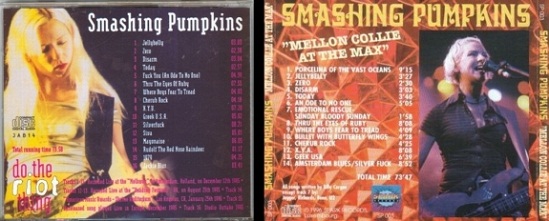
Arthur: I think I would give it a try anyway… (winks at John) John, you work as a Music Programmer for Melkweg. How and when did your career start at Melkweg? And with what activities is an average working day of a Music Programmer filled with?
John: I started to work at the Melkweg in 1988. So I work there far too long, according to some people. What I do on an average day is not really that exciting unless you Pumpkins-fans are terribly interested in mature porn.
Arthur: Hehehe… But now, we are getting pretty curious anyway how Melkweg was able to hire the Smashing Pumpkins. The gig they played in 1992 suited their second visit of Europe (they toured in Europe in January and February of that same year) but they were not a really well-known band yet, at that time. How was contact being made in 1992? Were you maybe involved in hiring them in 1992 too?
John: In 1991 I attended the New Music Seminar in New York and met Billy Corgan, I spoke with him for about an hour or so and because I was so intrigued by the first Pumpkins-album and I believed everything he said. Back in Holland I convinced the Metropolis-festival to book them and also got them in the Melkweg.
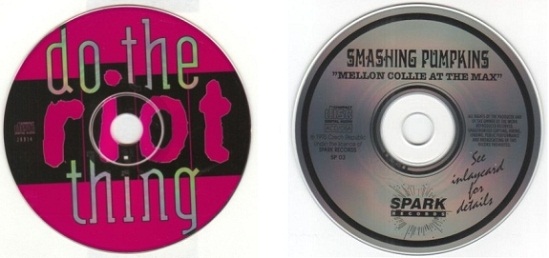
Arthur: A world famous second gig at Melkweg was played by the Smashing Pumpkins in December 1995. On the 12th to be exact. World famous, because it was a secret gig, it came out of the blue for everyone, but it was broadcast on VPRO Radio however. Also, the concert resulted in CD bootlegs like “Mellon Collie At The Max”. The most astonishing thing around this concert however, was the fact that the Smashing Pumpkins only did a handful of concerts in early 1995 in the US, then only a few gigs in Europe (2 in Ireland, and 2 festivals in UK and Belgium) in August, and meanwhile they were writing, practicing and recording like crazy in 1995, to finally release their most successful album to date in October of that year: Mellon Collie And The Infinite Sadness. Then, after a bit more than a month of preparation, they started the Mellon Collie world tour, that lasted more than 1 year, in… Melkweg Amsterdam! Of all places! Now, how was Melkweg able to book the Smashing Pumpkins for this special event? John, could you please tell us in detail how that went along?
John: I never really knew why they decided to play the Melkweg again in 1995 but I like to believe it’s due to the fact I could get along with Big Bill really well, we liked each other. Big Bill was their tour manager and more and is currently working for the Red Hot Chili Peppers, I still wish Bill all the best.
Arthur: So the December 1995 gig was planned and all. How was it marketed, how did you tell the world out there that this special, secret gig was about to take place? Was it sold out? Where many VIP people attending the show?
John: We did no publicity at all and quite frankly I have no idea how the tickets were sold, what I do remember is 10 fans who stand on the bridge hoping to hear something of the gig, when the Pumpkins started I saw it was not too crowded and let these 10 people in for free, these people were so happy at that time, I will never forget their faces.
Arthur: John, do you maybe remember the difference in fee that you guys had to pay the Smashing Pumpkins in 1992 and in 1995? Must have been slightly different, right? Or, if you cannot share this info right now and here (which is understandable), do you maybe remember the difference in the ticket price you guys charged the visitors to both gigs of the Smashing Pumpkins?
John: This is a boring question. Let me teach you one thing: look at the ticket price, take out 10% for VAT and PR’s and estimate how many people are in the venue, a few thousand Dollars, Yens, Euros stay in the club and the rest of the money goes to the band.
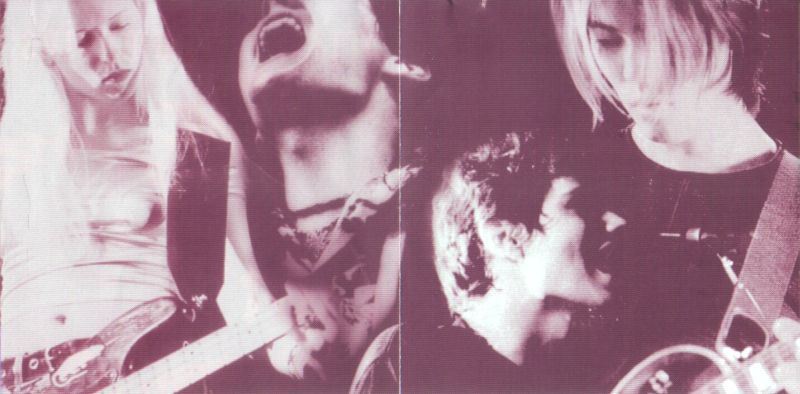
Arthur: Ah, right. Not that we know much more now… But it’s a delicate subject anyway. Do you also remember the difference in attitude of the band between 1992 and 1995? I mean, in just a few years they had grown from a not-so-big-band-yet (at least not in Europe, let’s be honest), to the hottest rock act of the Nineties. Did that change the band members, where they less easy to approach, or did they have more expensive dressing room wishes, for example?
John: This is a weird question, I will tell something later on. I don’t agree the Pumpkins were the hottest band in the nineties, sorry to say this, but Nirvana overruled them and so did Sublime and Jane’s Addiction, it’s a matter of taste, I know, but still. If the success did something with the band members is an ironic question, one overdosed if I’m correct. And if you really want to know, Billy wanted soup in the dressing room and when I met him he was eating his soup and said hello.
Arthur: What do you remember of the equipment that the band was carrying around in 1992? And what had changed in 1995?
John: I like music but I’m not a technician, I take it they got more expensive stuff on the road the second time but honestly don’t know.
Arthur: John, did you attend 1 or both of the 1992 and 1995 shows? How would you describe the atmosphere? How would you describe the show? The audience?
John: Both shows were really good and the audience existed of boys and girls, men and women, no dogs allowed (I’m pretty sure about that last detail).
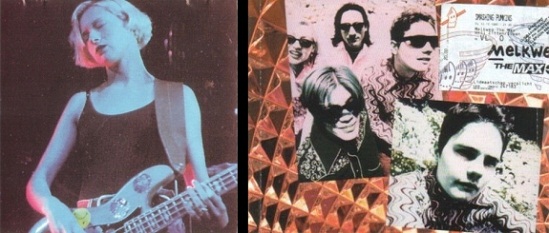
Arthur: Finally, are there any anecdotes, special stories, maybe even gossips, that you remember from 1992, 1995, or later, related to the Smashing Pumpkins? Remember, your words will be put on the internet, for hundreds or even thousands of Smashing Pumpkins fans to be read…
John: So you wanna hear a story, a true anecdote, here you go, this is your favorite band, eat it: Two years ago the Pumpkins were booked for a festival in Greece. Unfortunately Greece was on fire that summer and so was the festival-site, it was a true disaster, worldwide news. It’s common bands receive half of their money in advance as a deposit and the other half after the gig. Other bands like Franz Ferdinand and the Manic Street Preachers immediately returned their deposits and wished the people in Greece all the best. Not the Pumpkins, they wrote: The band is willing and able to play and expect their full fee.
Thanks John, for this interview. It was great talking to you, and thanks for your honesty and detailed information. You know, we, the fans of this band, almost never get to hear the point of view from a Music Programmer. We are damn glad that you took the time to fill us in and hook us up. Rock on, John!
Note: previous to this interview session, we were also in contact with other people from Melkweg. Both John and his colleagues at Melkweg confirmed to us that nothing could be found in the Melkweg Archives anymore, like tickets, posters, contracts, recordings, etc. We have to wait for Frank Quinto of SP.com and his release policy, if we will ever see any material about these 2 gigs in Amsterdam. Meanwhile, we can (and will!) enjoy the existing recording of VPRO Radio for the 1995/12/12 concert, available on a few bootlegs (see pics in this article).
…………………
Update 2012/08/18 – some footage of the Melkweg, Amsterdam show of 1995/12/12 can be seen in this documentary:
[youtube=http://www.youtube.com/watch?v=LKokVPFLlbs]
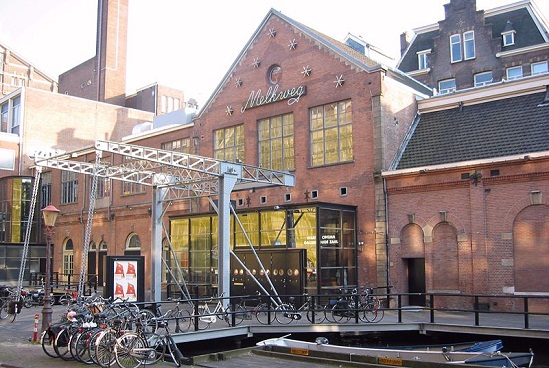
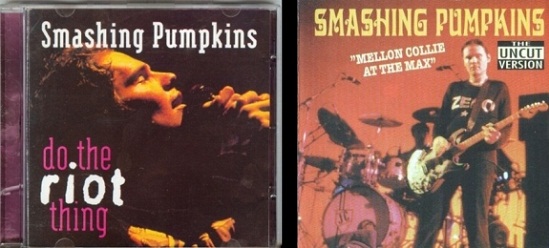

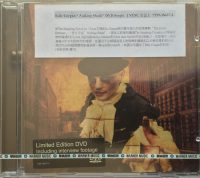
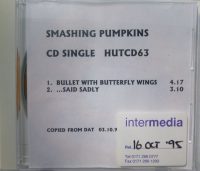
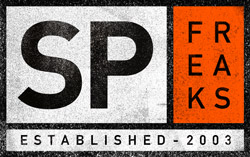
Leave a Reply